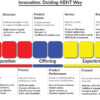I have this condition.
A condition? – Yes, it’s my memory.
Amnesia? – No, no, it’s different from that. I have no short-term memory. I know all about myself, but since my injury, I can’t create new memories. Everything fades. If we talk for too long, I’ll forget how we started. …and next time I see you, I won’t remember this conversation. I don’t even know if I’ve met you before. So if I seem a little strange or rude, or something, uh… I’ve told you this before, haven’t I? I don’t mean to mess with you, but it’s so weird.
You don’t remember me at all? – No.
We’ve talked a bunch of times. – I’m sure we have. What’s the last thing you remember? My wife………. ……………………
You really need a system if you’re going to make it work. You kind of learn to trust your handwriting. It becomes an important part of your life. You write yourself notes. Where you put them is really important. You need a jacket that’s got, like, six pockets… …specific pockets for specific things. You just kind of learn to know where things go and how the system works. You have to be wary of other people writing stuff for you… … that is not going to make sense or is going to lead you astray. I don’t know what makes people take advantage… … of somebody with this condition. If you have a piece of information that is… … vital, writing on your body instead of on a piece of paper can be the answer. It’s a permanent way of keeping a note………
I hope you have guessed it right. It’s from Christopher Nolan’s movie Memento. Memento is one of the rare commercial flicks selected for preservation in the National Film Registry by the US Library of Congress for being “culturally, historically, or aesthetically significant.” This top psychological thriller of the 21st century is considered unique due to its nonlinear presentation. Two different sequences of scenes are interspersed throughout the film: one in black and white and the other in color. While the black-and-white sequences are shown in chronological order, the color sequences run in reverse order. Both series meet during the climax, giving one complete and cohesive narrative. Despite the complex script, the entire movie was shot in just 25 days. This Nolan’s most refined work received Oscar nominations for Best Original Screenplay and Best Film Editing.
We have an Indian connection to Memento. It was a great inspiration to our own director, AR Murgadoss, who made a killing by re-creating it as Ghajini – in multiple languages! A movie that gave Aamir Khan’s muscles a cult status! On the other hand, Henry Gustave Molaison, who had memory issues, inspired Memento.
Henry Gustave Molaison, popularly known to neuroscientists as “HM”, suffered from intractable seizures. Doctors had to perform a lobotomy to cure his condition, which affected his everyday life. The operation did cure his attacks but resulted in dramatic changes. Henry could remember his past, but he failed to make new memories. However, his personality remained the same. While the operation left Henry in a constant state of discovery and confusion, it also gave neuroscientists new insight into how the brain processes and stores memory.
Another tipping point is that Memento is one of the rarest movies appreciated by the scientific community for a realistic depiction of the mental condition. A renowned neuroscientist, Christof Koch, called it “the most accurate portrayal of the different memory systems in popular media.”
Now, what’s Memento got to do with learning surgery? It has been my long-time quest to shorten the learning curve conundrum. How to make a steep learning curve shallow? I have found one of the easiest ways is taking down notes! Writing the surgical steps and the intricacies involved down on paper. Writing gives us clarity, commitment, and control. Writing provides us with a sense of direction. Writing helps us internalize the details and facilitates quick learning. Even more powerful is sketch-noting or drawing diagrams with annotations. Sketch-noting enables visualization, a most potent tool in the learning process.
I ask all our fellows to write down and review it before scrubbing for every case. However, unfortunately, most junior colleagues try to work from their memories, instincts, and intuitions. People who rely on their memories take longer to master any craft. Fellows who rely on their notes instead of their memory also commit fewer mistakes. Unlike Ghajini, who tattooed on his body to remember, writing down helps us etch the facts on our brain, specifically the hippocampus.
Let me summarize it in LEONARD’s (the Protagonist of Memento) words!
“Memory’s unreliable. No, really. Memory’s not perfect. It’s not even that good. Ask the police, eyewitness testimony is unreliable. The cops don’t catch a killer by sitting around remembering stuff. They collect facts, make notes, draw conclusions. Facts, not memories: that’s how you investigate. I know, it’s what I used to do. Memory can change the shape of a room or the color of a car. It’s an interpretation, not a record. Memories can be changed or distorted, and they’re irrelevant if you have the facts.”
Some people ask, can’t we learn by repetition or conditioning?
Again, LEONARD says!
“So Sammy can’t learn any new skills. But I find something in my research: Conditioning. Sammy should still be able to learn through repetition. It’s how you learn stuff like riding a bike, things you don’t think about, you just get better through practice. Call it muscle memory, whatever, but it’s a completely different part of the brain from the short-term memory.”
“Creating muscle memory takes time, and time is precious in this highly competitive world!” thus spake PNB!
Prof. Dr. Prahlada N.B
26 January 2022
Chitradurga.

















Leave a reply